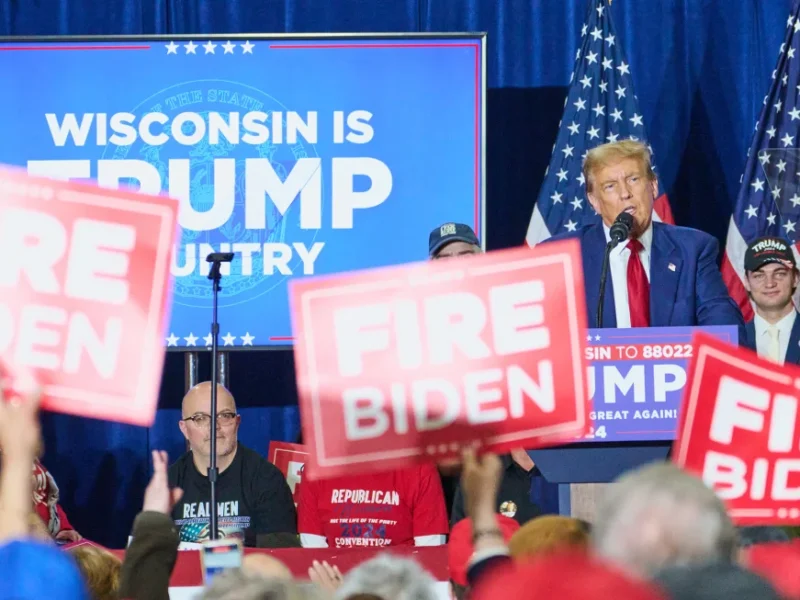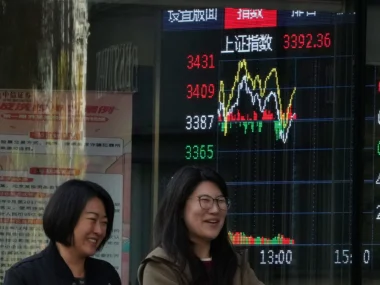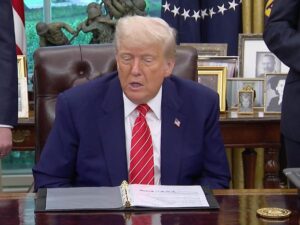Voters and economists appear to hold divergent perspectives on the state of the US economy, creating a significant challenge for President Joe Biden in crucial swing states that will play a decisive role in the outcome of the 2024 election. Recent polling conducted by The Wall Street Journal highlights this disparity and underscores the difficulty Biden faces, especially as recollections of the Donald Trump era diminish.
Divergence between public perceptions and empirical data.
According to the Journal, voters in swing states are placing more emphasis on the economy and inflation compared to the national average, and they hold a less optimistic view of the country’s current state.
In these seven critical states—Arizona, Georgia, Michigan, North Carolina, Nevada, Pennsylvania, and Wisconsin—only one-quarter of registered voters believe that the economy has improved over the past two years. However, economic indicators suggest that inflation is moderating, and the US is likely to avoid the recessionary concerns that were prevalent a year ago. Notably, this soft landing occurred without a significant increase in the unemployment rate, contrary to initial fears.
Larry Summers, the former Treasury secretary, recently characterized the economy as “relatively strong.” It’s worth noting that Summers was among the first to raise concerns about inflation following the Covid-19 pandemic, and he has been vocal in criticizing both the Biden administration and the Federal Reserve throughout Biden’s term.
Comparison between the overall US economy and the economy of your specific state.
The disparity extends beyond a mere disconnect between voters’ perceptions and economic metrics. Approximately half of these voters express satisfaction with their own economic circumstances and may view their individual states favorably. However, they hold a pessimistic view of the national economy.
For instance, in North Carolina, 66% of voters have a negative perception of the national economy compared to 33% who view it positively. Yet, when rating the state’s economy, these numbers are reversed. Similarly, in Wisconsin, negative sentiments about the national economy exceed positive ones by 16 points, while positive perceptions of the state economy surpass negative ones by 17 points.
Across these critical battleground states, 46% of registered voters believe their personal financial situation is improving.
What’s causing the disparity?
The divergence between Americans’ assessments of their personal finances and their overall economic outlook is not a recent phenomenon. CNN’s polling editor Ariel Edwards-Levy referred to Gallup polling from last April, revealing that while only 16% rated the economy as good or excellent, 45% regarded their personal finances in the same positive light. (It’s worth noting that perceptions of the economy have slightly improved over the past year.)
Edwards-Levy also highlighted the influence of partisanship in shaping responses to questions about the nation’s state, even those seemingly unrelated to politics.
“People’s survey responses often reflect, at least in part, their partisan affiliations,” she stated, noting that this effect is magnified when discussing broader national trends.
Numerous individuals might experience a sense of being overlooked or marginalized.
Similarly, while individuals may report in surveys that they consider their financial situation to be satisfactory, there are signs that they also perceive difficulties in keeping pace. CNN’s coverage highlights instances such as tenants struggling to afford rent, obstacles to homeownership that disproportionately affect racial minorities, and concerns regarding 401(k) balances.
Despite repeated record-setting performances in the stock markets this year, which may give investors a sense of financial security, only approximately a quarter of registered voters surveyed across swing states by the Journal believe that the average person’s ability to progress is improving in the US.
The argument that gains traction once people begin to pay attention.
Biden’s challenge in this election cycle will be to persuade these voters that their personal and state-level situations are indicative of the broader national landscape.
Currently, approximately half or more of registered voters in all swing states surveyed by the new Wall Street Journal poll believe that Trump is better equipped to address key issues such as the economy, inflation, and immigration.
Biden’s supporters remain optimistic, believing that public opinion will shift as the election draws nearer.
During an interview on CBS, First Lady Jill Biden expressed confidence that once voters focus on their choices, Joe Biden will emerge as the clear winner. She questioned the validity of the Journal poll, which suggests a narrow lead for Trump in Arizona and North Carolina and tight matchups in the remaining five states. Even when potential independent or third-party candidates like Robert F. Kennedy Jr. are included, Trump maintains a slight lead in Arizona and North Carolina, with no decisive frontrunner in the other states.
Jill Biden suggested that the president’s standing in the polls will improve over time.
Undoubtedly, there is still a considerable amount of campaigning ahead and ample time for new developments to occur between now and November.
Can a campaign persuade voters about Biden’s economic policies?
On Wednesday, the president teamed up with progressive independent Senator Bernie Sanders of Vermont at the White House to highlight Democrats’ achievements in addressing prescription drug prices.
Biden asserted that through measures such as enabling Medicare to negotiate for specific prescription drugs, they have successfully confronted the influence of Big Pharma. As an example, he mentioned that insulin costs are now capped at $35 for Medicare beneficiaries.
However, it’s likely that the majority of voters are still unaware of these efforts to confront pharmaceutical companies. A KFF poll from February revealed that over half of US adults express concerns about affording prescription medications.
Public perception of a president’s favorability tends to improve over time.
George W. Bush’s favorability rating stood at a notably low 35% when he left office in January 2009, as per CNN polling at that time. However, nine years later, during the subsequent Republican presidency under Trump, Bush’s favorability rating had remarkably rebounded. With events such as the Iraq War and the Great Recession receding into the past, and with Bush having exited politics unlike Trump, 61% of Americans held a favorable view of him.
Despite still being actively involved in politics, Trump’s approval rating has seen a partial rebound. Following the events of January 6, 2021, when more than half the country believed Trump should be removed from office, his approval rating plummeted to just 34%. However, in the years since, as the shock of the Capitol attack faded and voters associated Biden with the presidency and the challenges of the pandemic, retrospective views of Trump have improved.
According to a recent Wall Street Journal poll of battleground states, over half of registered voters either strongly or somewhat approve of the job Trump did as president. This shift in hindsight provides a significant advantage for Trump. Conversely, only 38% of registered voters in the same poll approve of the job Biden is currently doing as president.
Despite Biden’s emphasis on protecting democracy throughout his presidency, he finds himself in a close race with Trump among registered voters in the seven swing states surveyed on this question. This outcome is surprising given that safeguarding democracy has been a central focus of Biden’s presidency both domestically and internationally.











